Carved Wood Rattle Item Number: E20874-0 from the National Museum of Natural History

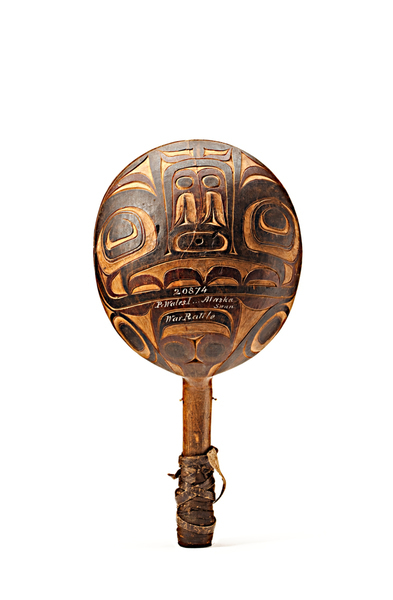
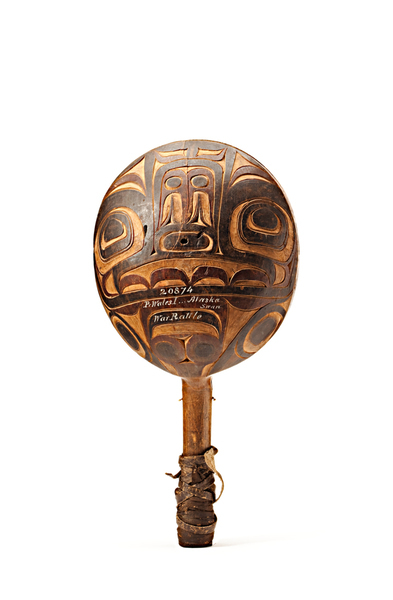
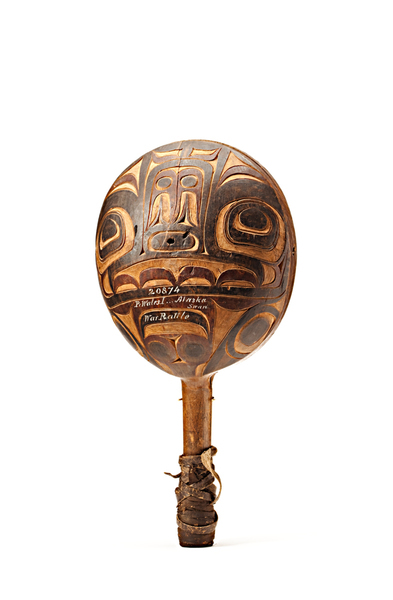
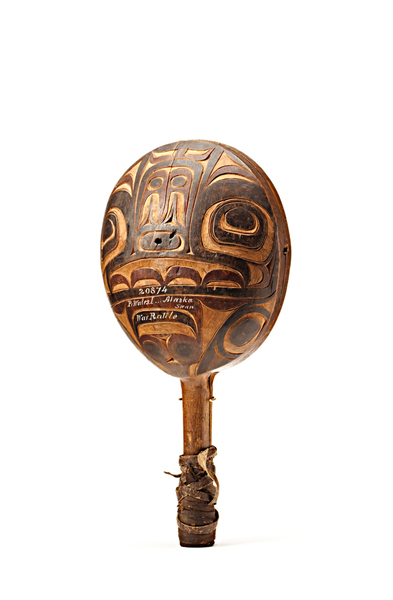
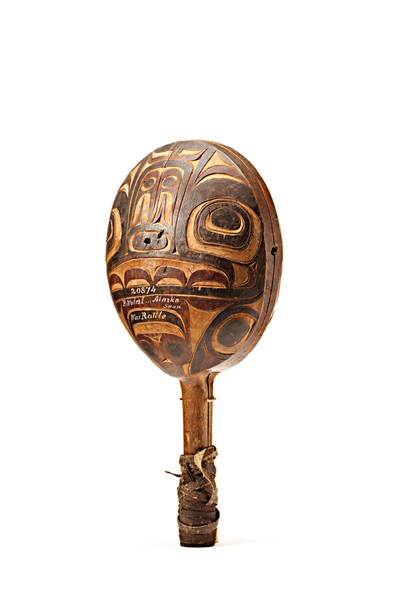

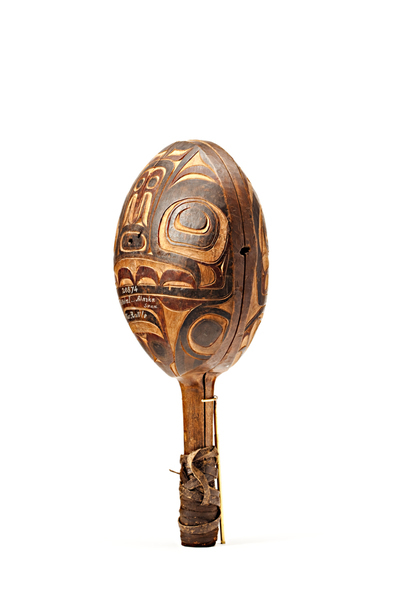
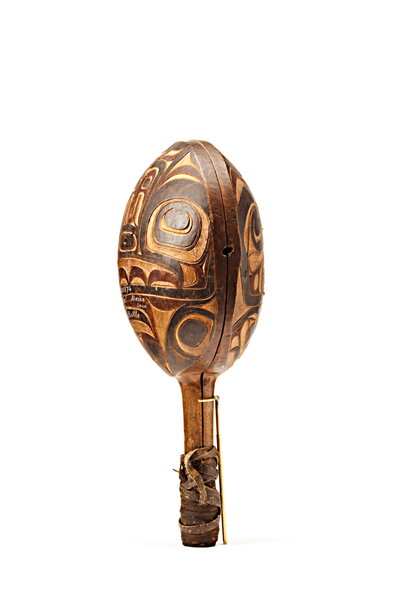
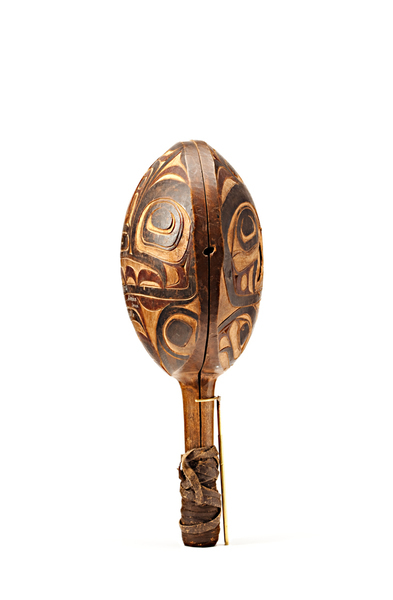
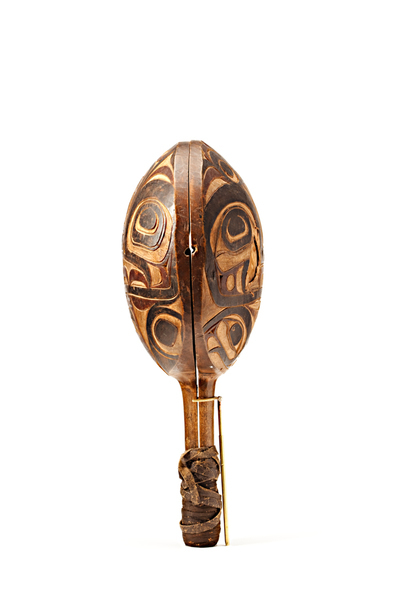

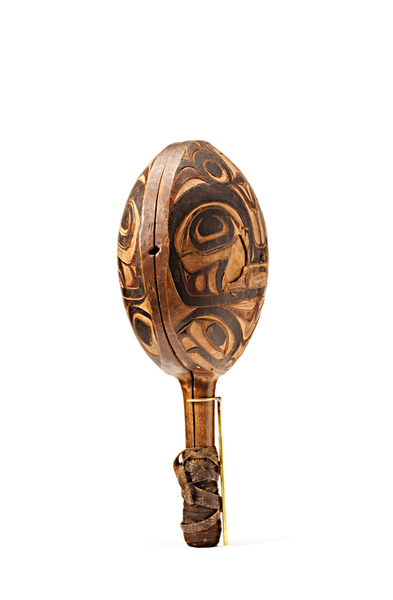


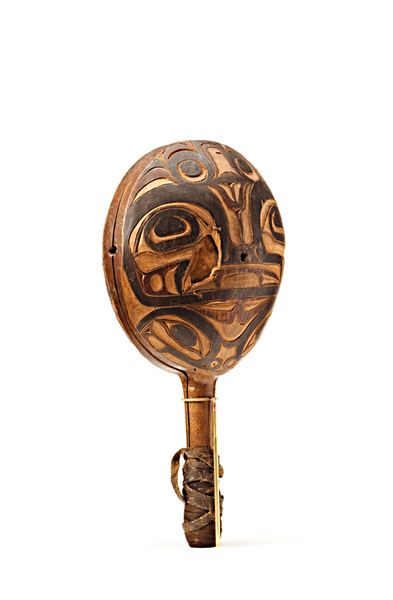

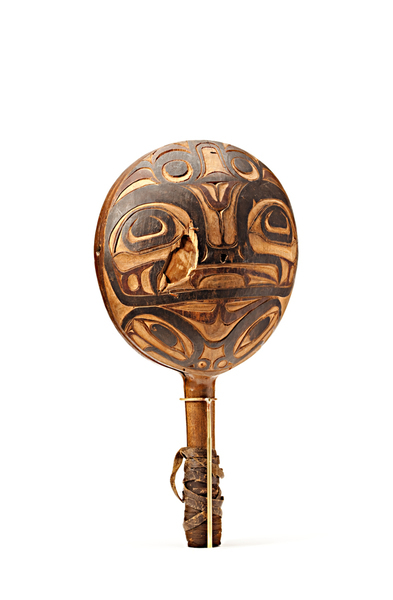
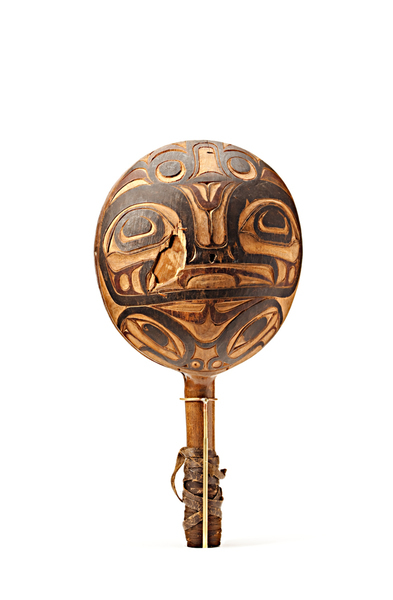

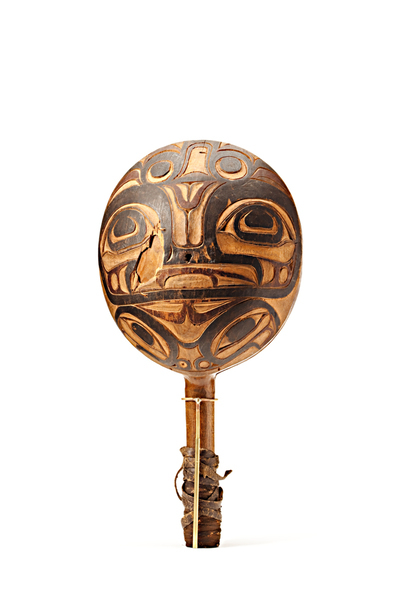
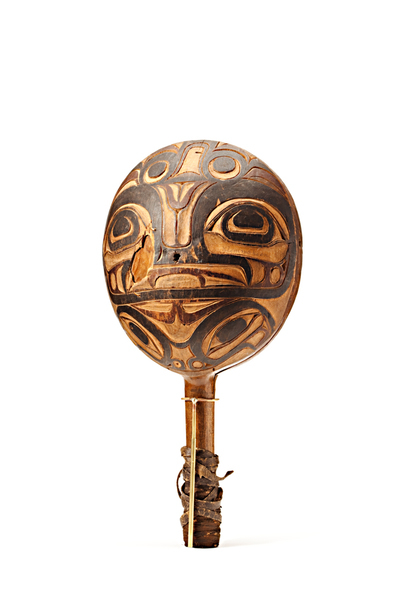
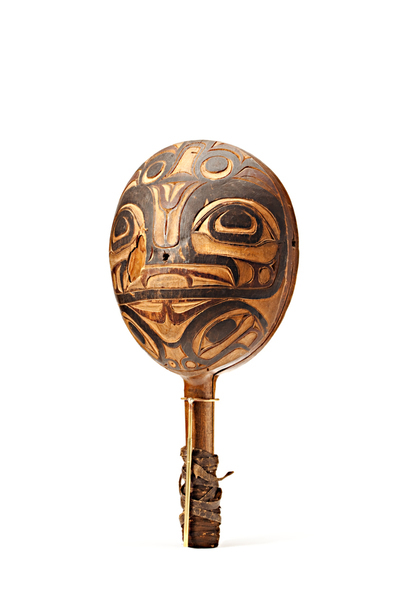

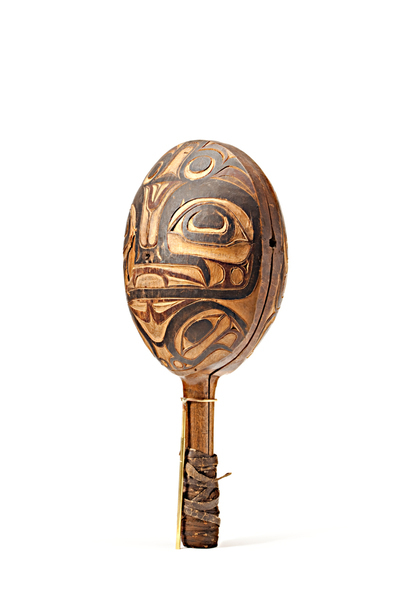
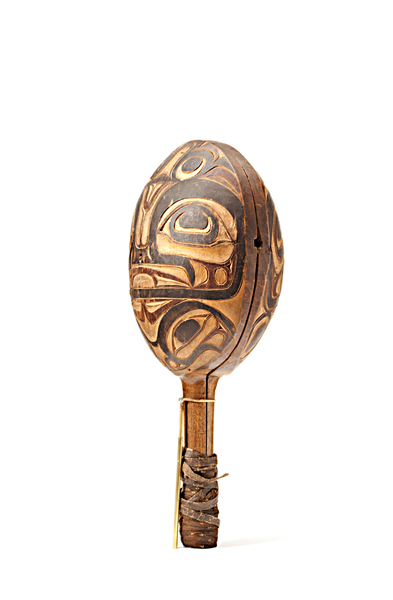
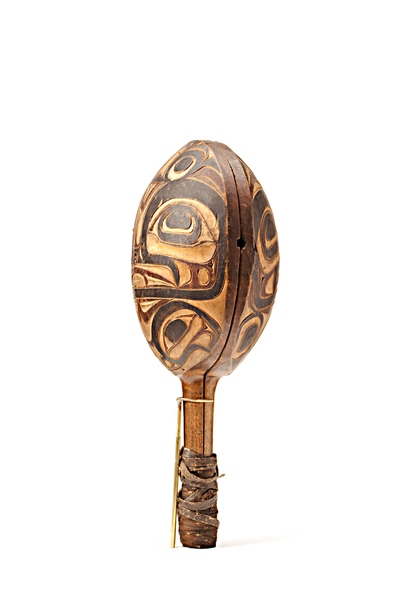
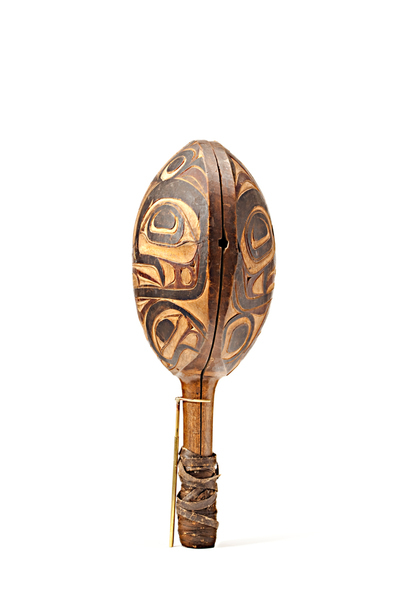
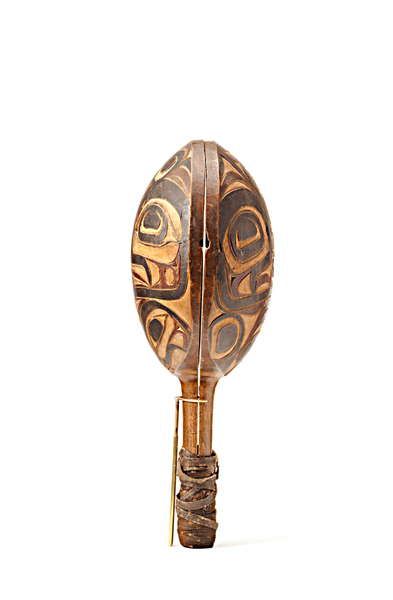
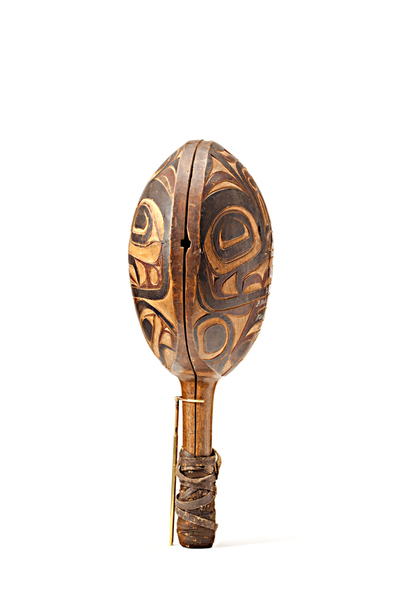

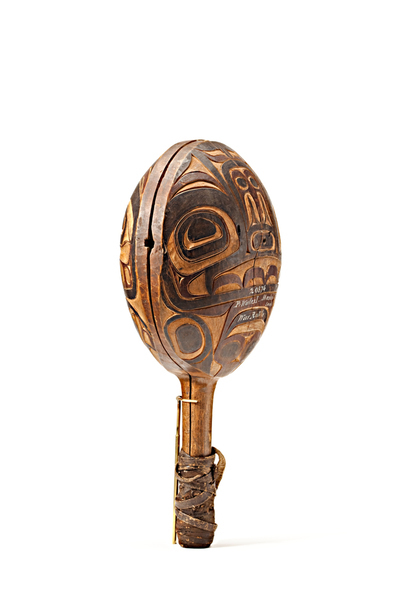


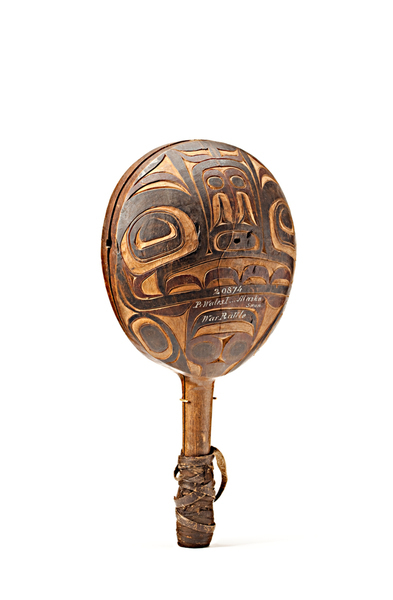
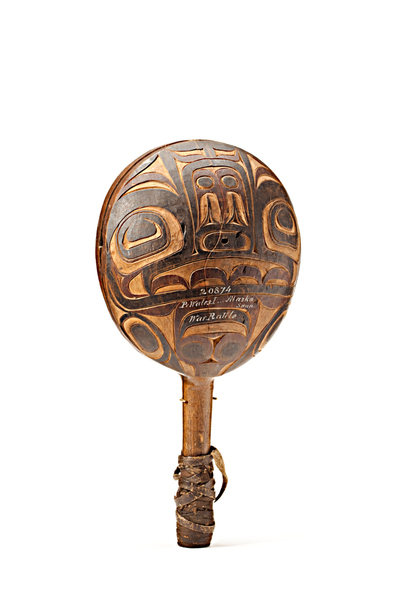
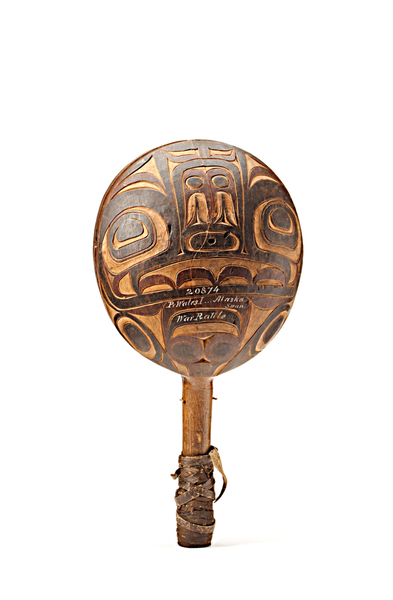
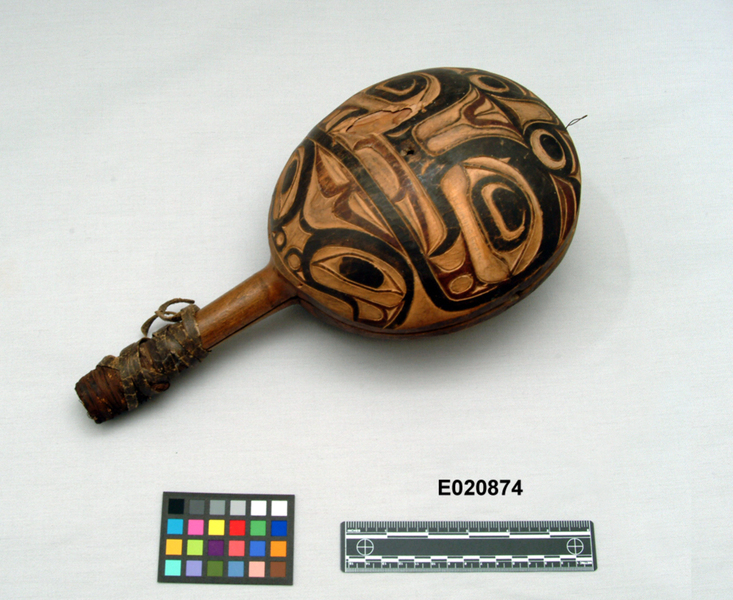
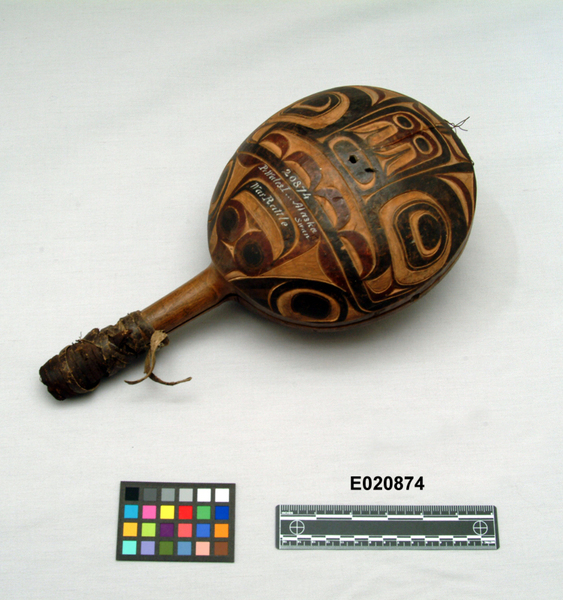
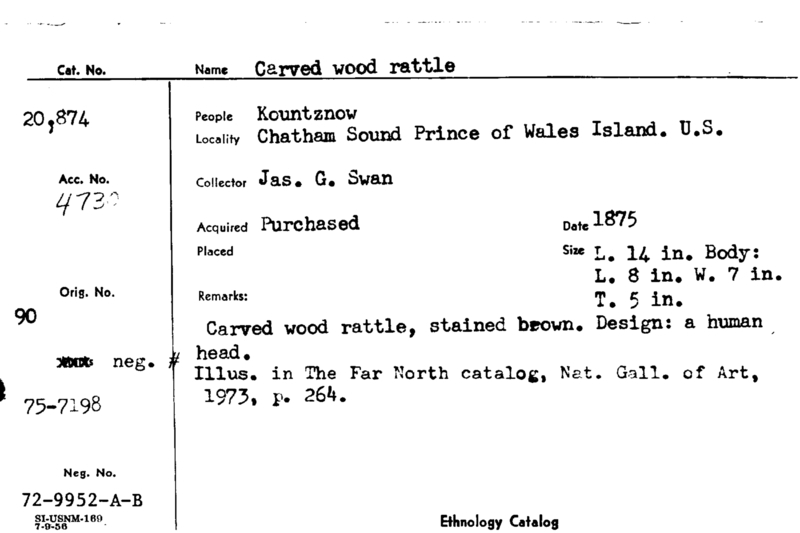
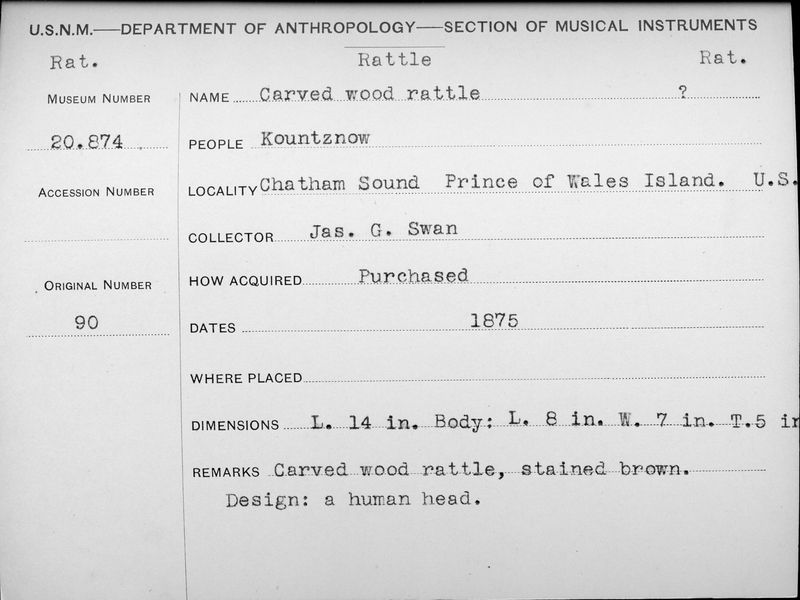

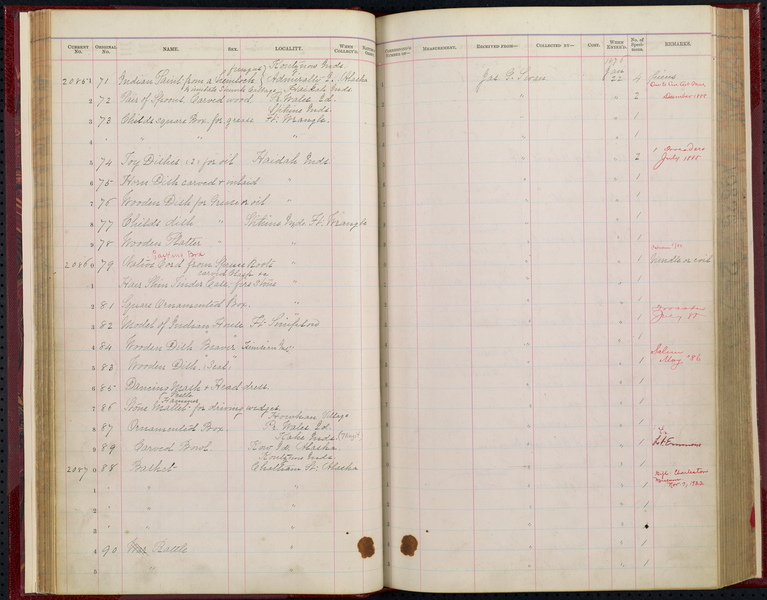
Notes
FROM CARD: "CARVED WOOD RATTLE, STAINED BROWN. DESIGN: A HUMAN HEAD. ILLUS. IN THE FAR NORTH CATALOG, NAT. GALL. OF ART, 1973, P. 264. LOANED TO THE NATIONAL GALLERY OF ART OCTOBER 20, 1972. RETURNED 5-29-73. LOANED TO THE S.I. CENTENNIAL COMM. 7-9-75. LOAN RETURNED MAR 22 1990."Accession file identifies original #90, Catalogue Nos. E20874 - 75, as 2 war rattles. Anthropology catalogue ledger book identifies them as from Koutznow [i.e. Hutsnuwu people, which was transcribed on the catalogue card as Kountznow], Chatham Strait [listed as Chatham Sound on catalogue card], Alaska. Prince of Wales Island has been written on the artifacts themselves by the museum cataloguer and added to the catalogue cards. The catalogue entry on this object in "The Far North" exhibit catalogue, assumed the object was Tlingit, probably from Admiralty Island from the vicinity of Angoon, but noted that the reverse side of the rattle is inscribed Klemmakoon (which is a term Swan used for the Haida town of Klinkwan, which is on Prince of Wales Island.)This object is on loan to the Anchorage Museum at Rasmuson Center, from 2010 through 2027.Source of the information below: Smithsonian Arctic Studies Center Alaska Native Collections: Sharing Knowledge website, by Aron Crowell, entry on this artifact http://alaska.si.edu/record.asp?id=48 , retrieved 1-5-2012: Rattle, Tlingit This very large, round rattle may have been used during war to coordinate an attack or to strike fear and confusion into the enemy. George Ramos (Tlingit) said that rattles like this had been described to him as part of a war leader's outfit. Round stones were traditionally collected at low tide to put inside. The abstract designs may represent a whale or frog, but are difficult to interpret. During Elders discussions in 2005 (see web page cited above for transcription), Donald Gregory (Tlingit) and Delores Churchill (Haida) identified the wood as possibly alder.
Item History
- Made in Admiralty Island, Alaska, USA ?
- Collected by James G. Swan in Admiralty Island, Alaska, USA ? during 1875
- Received during 1876
What
- Name
- Carved Wood Rattle
- Identification Number
- E20874-0
- Type of Item
- rattle
Who
- Culture
- Tlingit and Hutsnuwu
- Field Collector
- James G. Swan
Where
- Holding Institution
- National Museum of Natural History
- Made in
- Admiralty Island, Alaska, USA ?
- Collected in
- Admiralty Island, Alaska, USA ?
When
- Collection Date
- during 1875
- Acquisition Date
- during 1876
Other
- Accession Number
- 004730